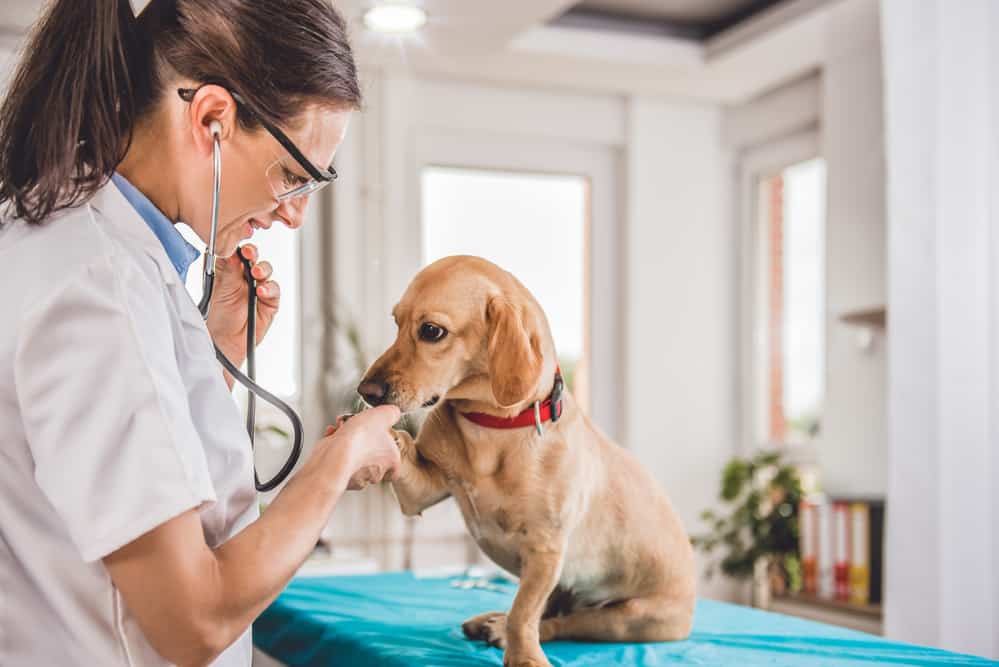Owning a pet can be one of the most rewarding relationships in your life. Pets are loyal, loving and even provide health benefits for their owners, such as lower blood pressure and stress reduction. Unfortunately, pets can be expensive when you add up food costs, supplies and trips to the vet.
Many people consider their pets members of the family and are willing to spend the money to care for their pets, but when faced with money issues, sometimes there just isn’t any extra room in the budget to care for them.
During tough economic times, there is often a steep rise in the number of cats and dogs being surrendered to animal shelters or abandoned as owners face unemployment, foreclosures, evictions and other financial hardships. When shelters get full, they often have no choice other than to euthanize innocent animals.

Photo: Deposit Photos
Saving on pet expenses during hard times
Fortunately there are ways to get help without abandoning Fido or Fluffy. Local and national organizations can help people care for their pets over the short-term and long-term. Here are some ways to find help caring for your pet during hard times.
1. Investigate what resources are availableCheck with local food banks, pet store managers, pet rescue organizations, animal shelters, the county animal control department and social services agencies for resources for feeding your pet or for low-cost vet clinics. Do an Internet search for “[your county or city] free pet food or clinics” to see whether help is available.
You can also scour Craigslist and Freecycle for free or cheap pet supplies and food or post a “wanted” ad on either website. People may be willing to part with food that their pets refused, or leftover food or supplies when a pet has died.
2. Ask for help and discounts
If your pet is sick and needs veterinary care, ask your vet’s office if they offer a sliding scale for payments, accept a payment plan or will give you free samples of medication for your pet instead of costly prescriptions. Local veterinary schools may also provide services for a lower cost.
If the proposed treatment plan is very costly, it may also be worth paying for an office visit to get a second opinion from a different vet.
3. Find low-cost spaying and neutering services
If your pet isn’t already spayed or neutered, it’s your responsibility as a pet owner to have this done.
The procedure will not only prevent you from having additional medical and food costs for your pet if it were to become pregnant, but it also prevents unwanted puppies and kittens from ending up in pet shelters, which further reduces their resources to help homeless animals. There are also many health benefits for spaying and neutering your pets. SpayUSA is a fantastic resource to find low-cost spay and neutering services through about 2,000 programs nationwide.
Some participating clinics also offer other low-cost services, such as vaccinations and microchipping. A referral and voucher program through SpayUSA can help qualified, low-income pet owners afford spay/neuter costs by covering a portion of the costs for the surgery.
4. Research what the experts have to say
If you’re still having trouble finding help, the online article “ Are you having trouble affording your pet?” from the Humane Society of the United States provides suggestions and lists of additional organizations that may be able to help.
What to consider before getting a pet
Finally, if you are considering getting a pet, please think about whether you have the time and resources to provide for the animal. When you start looking for a pet to adopt, check local shelters and pet rescue organizations rather than purchasing from a pet store or breeder.
Not only is it less expensive, but you’ll be helping an animal who is truly in need and helping to reduce the demand that encourages breeders and puppy mills. Dogs and cats of every size, age and breed are available for adoption.

Our adopted pet, Puggle. Photo by Val McCauley
Petfinder is a great resource to search for your next pet; searches can be limited to particular breeds and locations. We adopted our adorable, loving Puggle (pictured above) from a local rescue organization. She had been abandoned and sent to the shelter not once, but twice. While we’ll never know why her other owners abandoned her in the first place, we do know that she has never displayed any negative behavior in the year we’ve had her.
Common questions people ask
Can you get dog food with food stamps?
No, using food stamps is not approved for buying dog food or pet food. There are currently no options for food stamps for pets. It’s not included as an option because it’s considered non-food.
Can you buy cat food with food stamps?
No, using food stamps is not approved for buying cat food or pet food. There are currently no options for food stamps for pets. It’s not included as an option because it’s considered non-food.
You may also be interested in:
- 8 ways to save on veterinary care for pets
- 7 tips for frugal pet ownership
- Cut the cost of pet care with these easy tips
- Free pet safety tips for the 4th of July and more

Even more pet articles at Living on the Cheap:
- Sniff out ways to save at pet stores
- Free help lines for pet behavior problems
- Free, cheap and homemade toys and gifts for pets
- 10 cheap & easy pet Halloween costumes

I am a sixty two year old widow, raising my eight year old grandson. I acquired an abused toy Australian Shepard that was crated since a little pup. Nikita had no prior health care. To catch her up with a vet for all acquired over $800. I live on SSI monthly. I am fearful if she requires more vet services me and my grandson will have devastating circumstances.
I am a retired with a German sherperd who’s about three years old and he’s having seizures and I don’t have the means to take him to Vet and even having problems with having food for him. My grandkids love him so much and when he have the seizures all of us can only cry when we see this. We love him so much and we don’t want him to suffer, if anyone can help my email is beautifulcarolyn54@gmail.com
You can get hemp cbd for dogs off amazon pretty cheap and helps with seizures in dogs,i paid about $13 to $15 for the bottle i got.it also helps with other things as well,my dog has them from time to time especially certain dog foods or snacks will cause him to have em,so i allways trymy best to keep him on the same food and treats,but they are sold out at times…..hope this helps..